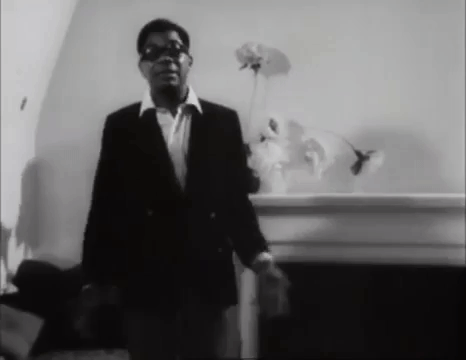
‘Born October 2, 1919 in New York, Shirley Brimberg Clarke danced into the world of art in her teens, studying with such innovative choreographers as Martha Graham, Hanya Holm and Doris Humphrey.
‘After marrying and having a daughter, Clarke turned her talents to cinema, becoming an esteemed filmmaker at a time when few women worked in the field. Her early shorts reflected her lifelong love of dance along with a growing mastery of the new medium. In her award-winning A Dance in the Sun (1953), In Paris Parks (1954), Bullfight (1955) and A Moment in Love (1957), Clarke captured movement on film in a new way, eschewing close-ups in favor of long takes and innovative editing. An active member and advocate of New York’s independent film community, Clarke later turned her attention to social-issue filmmaking.
‘For her first feature, Clarke took on an acclaimed and controversial stage play by Jack Gelber. Her adaptation of The Connection (1961) won praise for its graphic, unglamorous depiction of drug use, but embroiled Clarke in a two-year censorship battle, which she ultimately won. Her next film, The Cool World (1964), was a further collaboration with Carl Lee, the African American star of The Connection and Clarke’s long-time romantic partner (until his death in 1986).
‘In 1963, Clarke directed Robert Frost: A Lover’s Quarrel with the World. Filmed months before the poet’s death, the documentary revealed Frost’s warmth and charm in speaking engagements and at home. Clarke was reportedly unhappy with the final cut, but the film went on to win the Oscar for Best Documentary. Her daughter Wendy writes, “Shirley did consider (it an honor] that she won an Academy Award for this film and even went to Los Angeles to the Awards. She sat just behind Danny Kaye.”
‘Clarke’s fourth feature, Portrait of Jason (1967), was a completely different kind of project. A pure documentary without adornment, Portrait was created from a single, 12-hour-long interview with Jason Holliday, a gay African American hustler and aspiring nightclub performer. Holliday’s stories of racism, homophobia, parental abuse, drugs, sex and prostitution would have been shocking if not for his candor, humor and acerbic charm. The film was a revelation and remains one of the most respected LGBT films.
‘Despite the success of Portrait of Jason, Clarke found it increasingly difficult to get financing for her films. From 1975 to 1985 she redirected her talents to teaching film and video production at UCLA. Clarke’s fifth and final feature, Ornette: Made in America was well-received portrait of the eccentric musical genius and a cinematic comeback for Clarke. Once again, she was on the cutting edge of film style, weaving documentary footage, video art, music videos and architecture into a vibrant collage that mirrored Coleman’s groundbreaking jazz. It was her groovy swan song, as Clarke then retired. She died of a stroke in Boston in 1997.
‘For a director whose films were designed to unsettle audiences, perhaps the most shocking aspect of Clarke’s career is her lack of recognition today. Although acknowledged as a major influence by many current filmmakers, there is not one single book devoted to her work, nor has there been a significant re-release of her films.’ — Project Shirley
____
Stills
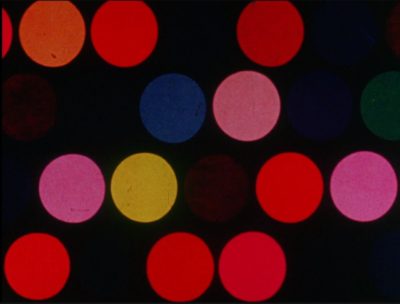

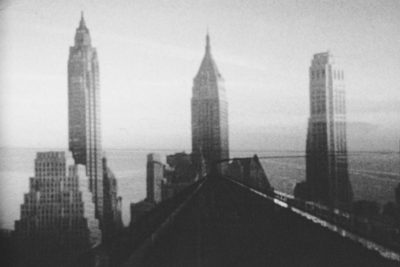
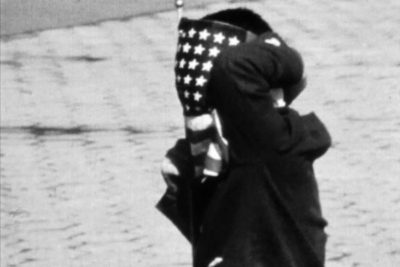
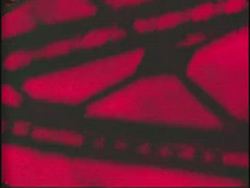
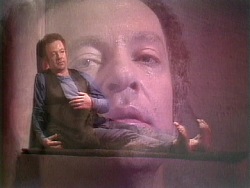




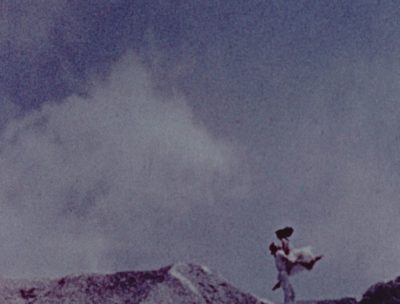





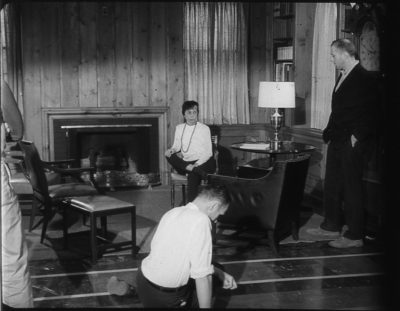
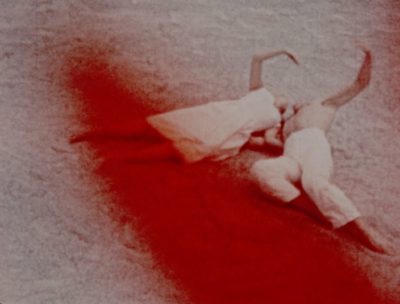
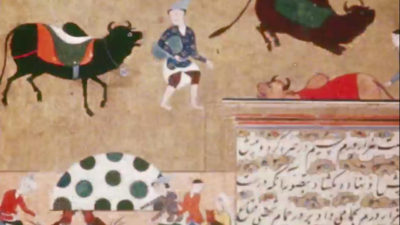
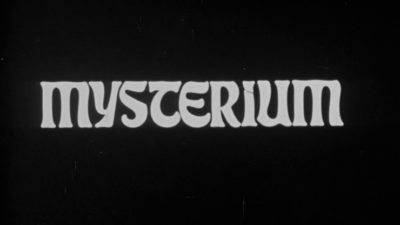
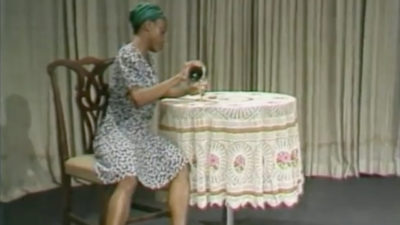

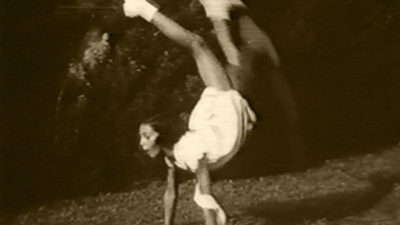
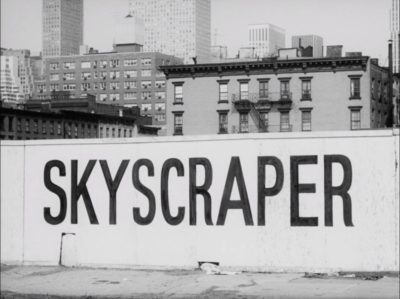

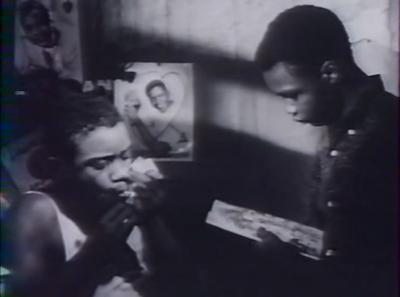

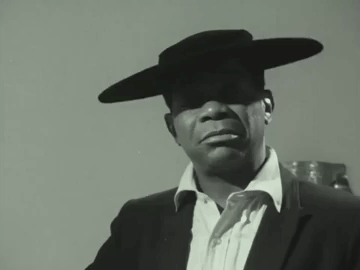
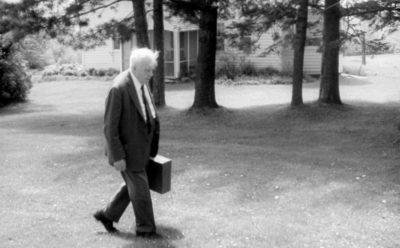
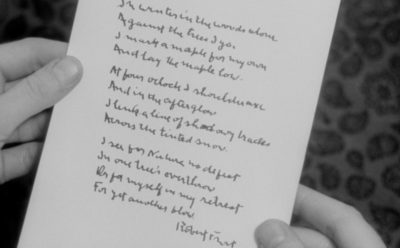
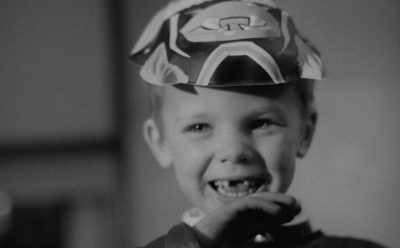
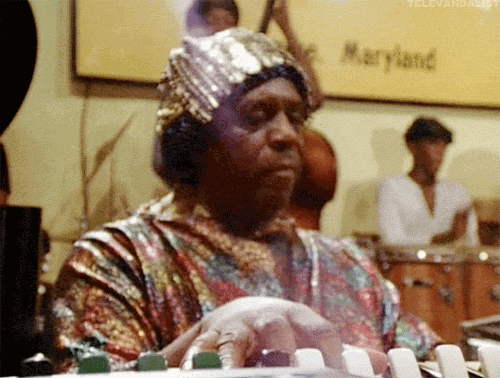
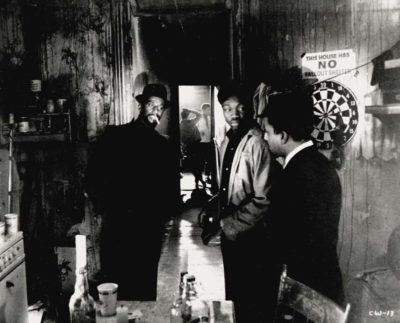
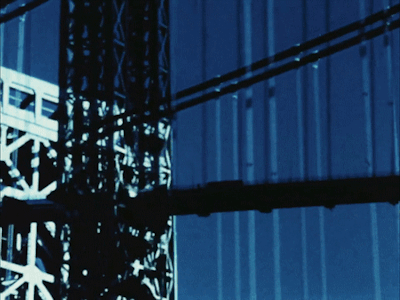



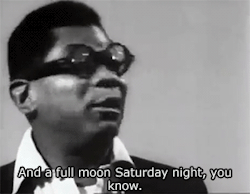


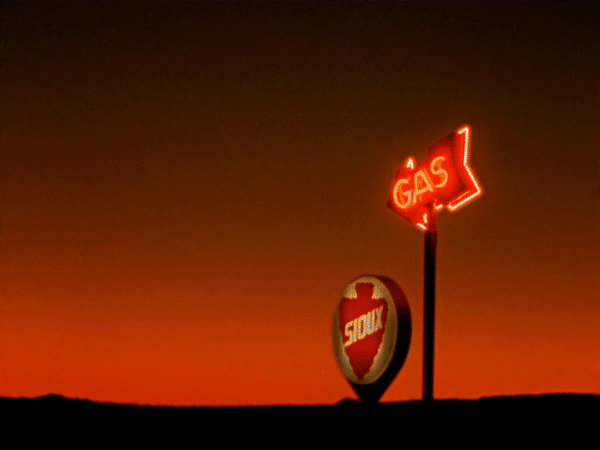
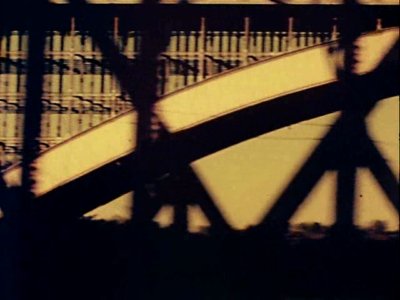

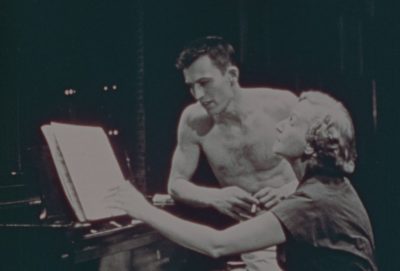
_____
Further
Shirley Clarke Site
Shirley Clarke @ IMDb
A profile of Shirley Clarke
Shirley Clarke Saw the Future of Cinema
The Magic Box: The Films of Shirley Clarke, 1929–1987
Shirley Clarke @ MUBI
Shirley Clarke @ Milestone Films
The Complicated Camera of Filmmaker Shirley Clarke
Celebrating Shirley Clarke
choreography of cinema : an interview with shirley clarke
Interview with Shirley Clarke
Shirley Clarke @ letterboxd
PORTRAIT OF SHIRLEY: a film in progress about Shirley Clarke
Shirley Clarke, l’anti-Hollywoodienne
Shirley Clarke’s ‘Connection’: Will It Click At Last?
Thoughts on Shirley Clarke and The TP Videospace Troupe
SHIRLEY CLARKE MAKES THE CONNECTION
Shirley Clarke @ UNDERGROUND FILM JOURNAL
Shirley Clarke @ senses of cinema
Experimental director Shirley Clarke on her film about drug addiction – archive, 1961
6 Filmmaking Tips from Shirley Clarke
Shirley Clarke: The godmother of indie cinema
Shirley Clarke – Is this reality?
When Shirley Clarke Met Roger Corman
Shirley Clarke and the Obscuring of Reality
TO THE BEAT OF SHIRLEY CLARKE
____
Extras
Portrait of Shirley Clarke (1968)
Shirley Clarke: A Retrospective
Shirley Clarke on women in film and men in money
______
Interview (1964)
by Harriet Polt/Film Comment
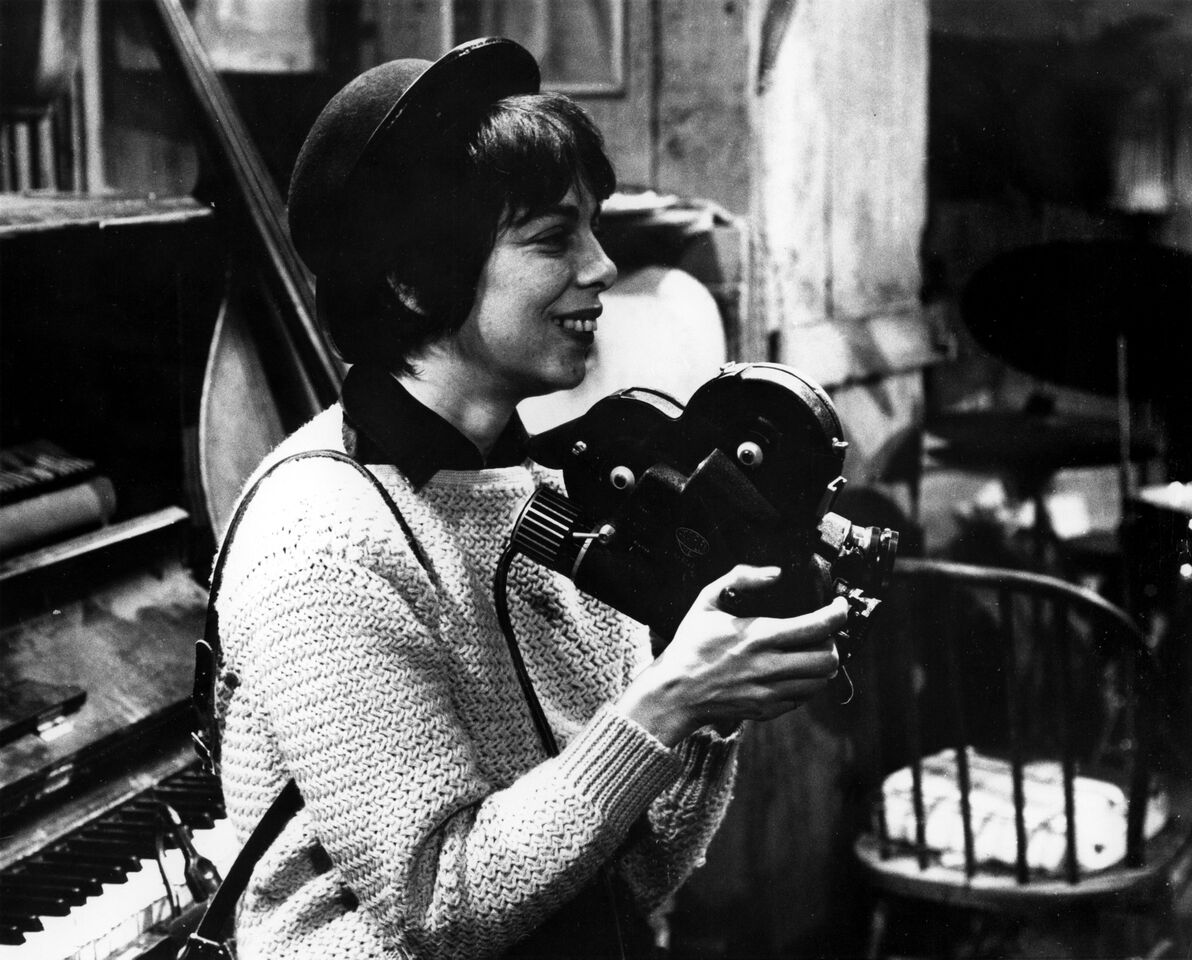
How did you get your start in filmmaking?
My first film was a short dance film called Dance in the Sun. When I saw the first rushes I was horrified: it was just terrible. I debated on whether to finish it or not, but I finally decided to go ahead, because if I didn’t I would never learn anything. Still, most dance films are so terrible that mine was among the best, and it won a prize. This made me an authority on dance films. I then made two more dance films and a number of other short features: seven all together before I made The Connection. One of the shorts, Skyscraper, won a prize in Venice and also in the U.S. and gave me a name, making it possible for me to go into features. The first film I really felt strongly about, though, was Scary Time, a film I made for UNICEF. It is a kind of stream-of-consciousness film juxtaposing shots of kids dressed for Halloween as skeletons, and other kids who really are skeletons. The film ends with a long, long shot of a Moroccan baby whose face is all covered with flies; all through the shot, the baby never moves to brush the flies away, as if to say, isn’t everybody covered with flies? UNICEF hated this and wanted me to cut it from the picture, but I refused. The film is hardly ever shown. It was made to be used in Western countries, to influence people to get their governments to give money to UNICEF. But so far as I know, it has never played in the U.S. and probably not in any of the Eastern countries either.
How did you come to make The Connection?
It was easy. I went to see the play and decided I wanted to make a film of it. The author, Jack Gelber, sold me the rights to it. He had refused a number of other filmmakers before me.
Do you intend to go on making features or do you plan more shorts?
Economically, it’s impossible to stay with shorts. You have to find a sponsor, and then you might as well be working for Hollywood.
How do you feel about Hollywood? Do you have any intention of making a film there?
Never. Hollywood has preconceived ideas about what audiences want. The Hollywood idea is that films about Negroes or films about young boys don’t make money. I would never have got money in Hollywood to make The Cool World.
Where did you get the money to make your films?
I raised it from many people, like the people who give money to put on plays and are interested in the glamor of being an “angel.” Of course, you have to keep costs down and only plan films that can be made on a low budget. The Cool World cost $250,000, which is about a fourth of what it would have cost to make in Hollywood. But the ease with which one can get money for a film depends very much on the success of the last film.
There is much talk of a “New York School.” Do you consider yourself a part of this?
I’m not sure there is such a thing. Both in New York and on the Coast there is a renaissance of films being made by individuals. These individuals come in two varieties: the young men who are trying to get to Hollywood, and the kind who want to remain personal and keep costs down. This is the only common ground.
Mrs. Clarke, how does it feel to be a woman film director?
It’s fun. I find it an advantage being a woman, but perhaps that’s because I am used to being one. I find that I can get away with things that a man wouldn’t. At first I was worried about having problems with male crews, but then I found that those who don’t like working with a woman simply don’t join up. Pretty soon we begin functioning as people, not as members of different sexes. I do have some trouble working with actresses. I didn’t get along at all with Yolanda Rodriguez, the girl who played Luanne in The Cool World.
How did you become interested in the Negro problem?
For the past four or five years I have felt that this is America’s key problem. Without a solution to it, we will never have a free country. After all, we whites are in the minority—two thirds of the world is colored.
Can you tell us something of how The Cool World was made?
The exteriors were all shot on location in Harlem. For the interiors, the New York Housing Authority gave us the use of a whole tenement building which was about to be demolished. For each set, we used a different floor of the building. We didn’t have to buy a stick of furniture—we just used what was there. Our interiors were all pre-lit, so we could move the camera freely. Throughout the film, the camera was hand-held. For sound, we used radiomicrophones, so we didn’t need a boom. The film took almost a year to make, plus four months of casting.
How did you do your casting?
Carl Lee (who plays the part of “Priest” in the film) did most of the casting. He went around to all sorts of youth organizations—settlement houses, social clubs, and so forth. Everywhere he went, the directors would bring out their star pupils. But these kids were completely unable to act. Then Carl would see some kid slinking around the school yard and would ask for him. “You don ‘t want him!” the director would say. But we took these kids to a big loft that we had, and we began improvising from the story. This got them acting, and also made the whole thing possible, because, although they are very bright, many of these kids can’t read. We used this technique throughout the film—a mixture of memorizing lines and improvising. You can’t get quiet, tender moments by improvising, so those we had to write out. But many of the others we improvised, using a straight Stanislavsky technique either before or during the shooting. We never did a scene without checking with the kids first to see if the action seemed believable to them.
How do you like working with non-professional actors?
Well, I worked with a combination of professionals and non-professionals which is confusing. You have to try to make the non-professionals be what they are, and at the same time you have to break the professionals of their bad habits. The kids had no bad acting habits or preconceptions. They were just wonderful to work with—working 18 hours a day, seven days a week, for 12 weeks without a complaint. And shooting a film can sometimes become pretty dull for the actors.
What has become of these kids since The Cool World?
These were all kids who had police records. The life they played in the film was pretty much the life they had lived. Now they’ve changed. Hampton Clanton, who plays the lead, is finishing his last year of high school and goes to a neighborhood playhouse. The boy who plays the leader of the enemy gang is working as a messenger for a playhouse. Some of the boys are acting in an off-Broadway play that our set-builder has written. I don’t know what Yolanda Rodriguez is doing—she didn’t want to be an actress at all. We had to beg her to come all the time. She was working after school for a bra manufacturer, which interested her much more than the film.
How do you explain the change in the lives of these boys?
Their main problem is a lack of self-identity, of dignity. The film gave them a sense of pride: the idea that they are important enough to make a film about what we’re curious about is how these kinds of kids will react when they see the film. We would like them to come out a little straighter and prouder than when they went in.
What are your plans for future productions?
Right now I feel I am still working on The Cool World. The film was barely finished when we brought it to Venice, and it still needs some cutting. After that, I want to take a couple of months to plan for the next two productions. I would like to keep the same producer and the same technical people. Eventually, I would like to form a co-op with other directors and produce for each other. We have various enough backgrounds in film that we have an overall knowledge of how to make a film. That wary, too, we could covet each other’s losses. So, if one director’s film loses money, another will gain, and the co-op will still break even. I’m not the only person who wants to do this sort of films I’m doing, or the only person with talent. But talent isn’t enough for a modern artist. He has to be a salesman too. And he has to be willing to plunge in, as I did with that awful dance film. Other people are too cautious. As for me, I don’t care. If the film doesn’t succeed, it’s only money, or a few years of your life.
Do you expect to have any trouble with censorship, as you did with The Connection?
We won the court case in New York with The Connection so we shouldn’t have any trouble. Some cities, for example Chicago, still won’t play The Connection. Burt most cities that have a censorship board will follow New York’s lead. Of course, it did take a year to get that case through the court.
If it’s not being too personal, how did you eat during that year, or at other slack times?
Most filmmakers have to accept commissions or films, or do other little jobs. I’m lucky—I have a husband who has a regular job.
________________
15 of Shirley Clarke’s 32 films
________________
Dance in the Sun (1953)
‘Drawing on her dance background for her first film, Shirley Clarke’s Dance in the Sun is a simple, straightforward work of filmed dance–but just because it’s simple doesn’t mean it’s not effective. The music (Right up to the closing cigarette break!) is engaging and dancer Daniel Nagrin’s movements are energetic enough that the film-essentially in two halves-indoor and outdoor–shifts from claustrophobic, nervous energy to expressive joy at being out in the world. Short enough that you could watch it on the go in the morning before work, and it just might have you bouncing out into the world as well.’ — Jay D ‘s Watching
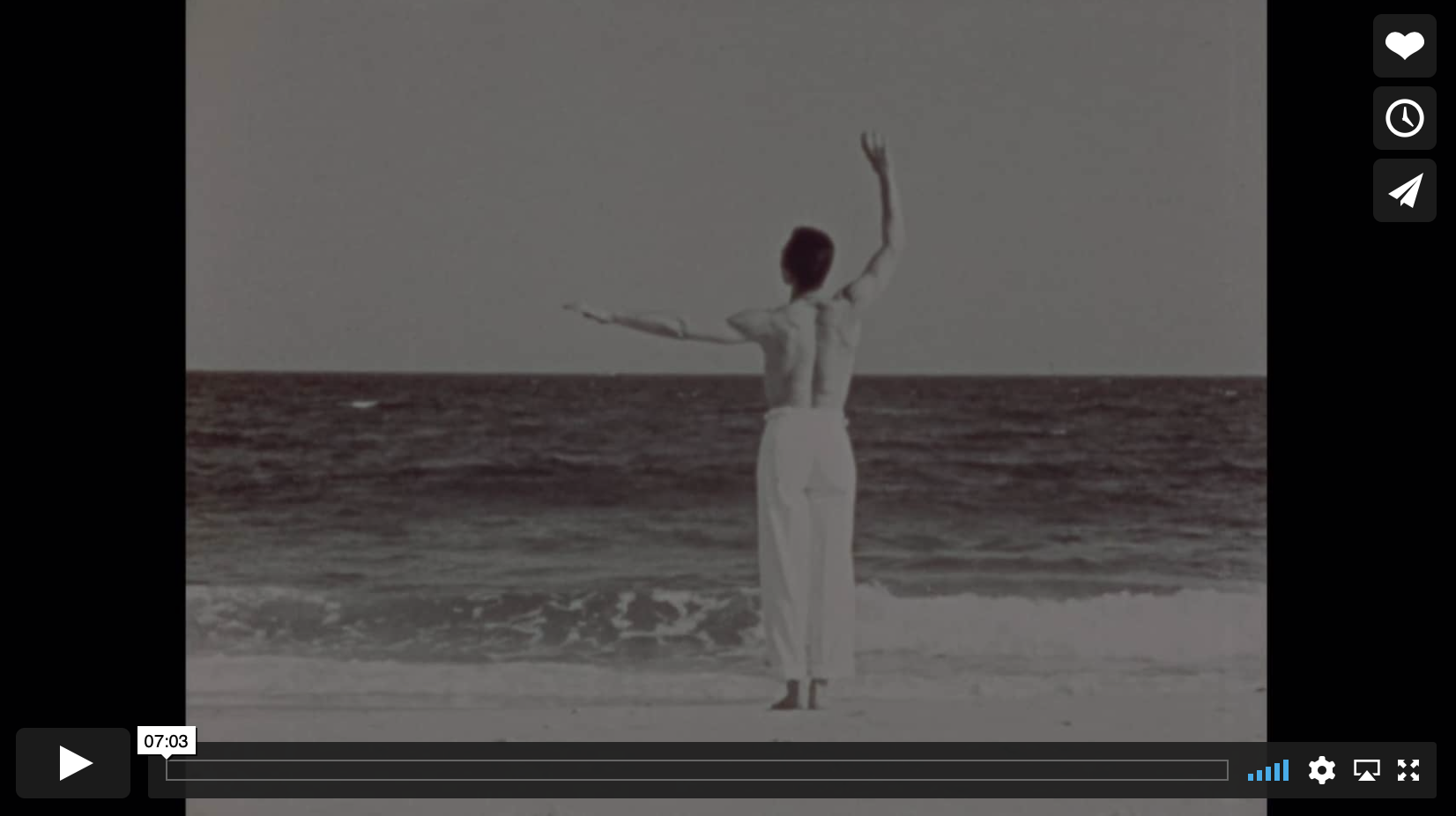
________________
Bullfight (1955)
‘Clarke parallels the sense of spectacle and the real violence of an actual bullfight with a dance interpretation of the emotional experience, using a distillation of the ritual gestures in the Spanish bull ring. In her intense interpretation, Sokolow embodies both matador and bull, both executioner and the sacrifice.’ — DANCE ON CAMERA
the entirety
_______________
A Moment in Love (1956)
‘A balletic meeting between two lovers progresses from a woodland tryst up to the mountain tops. There are some interesting camera effects with multiple exposures or a vanishing figure. Unlike Clarke’s early Dance in the Sun, or her later dance-based films (Four Journeys into Mystic Time), A Moment in Love places cinema uppermost and the dancing second. As the dancers move, so does the camera, becoming almost like a dancer itself. Says Clarke, “I started choreographing the camera as well as the dancers in the frame”. At one point, the dancers appear to be suspended in the clouds.’ — Chris Docker
Excerpt
A Moment in Love Before and After Restoration Comparison
________________
Brussels Loops (1957)
‘A collection of twenty short films, averaging 2-3 minutes, by various filmmakers depicting American life, intended to be shown in a continuous loop at the American Pavilion of the 1958 Brussels World’s Fair.’ — IMDb
Excerpt: Shirley Clarke BRUSSELS LOOPS [1958] ► LIVE SCORE by MTS
_________________
Bridges-Go-Round (1958)
‘Made out of footage rejected by the U.S. State Department for its commissioned “Brussels loops” project, in this film Clarke makes New York City bridges dance using fast editing and superimposition. Clarke made two versions of this film using different soundtracks over an identical picture. One version uses an electronic music score written by Louis and Bebe Barron; the other version uses a jazz score written by Teo Macero. The film is currently released with both versions spliced onto one reel, creating an eight-minute film.’ — lib.berkeley.edu
the entirety
_______________
Skyscraper (1959)
‘In Clarke’s 1959 short film Skyscraper, it’s the construction of a building that becomes a dynamic performance, one in which bodies, surfaces, space and light interact. Through directing In Paris Parks (1954), Clarke had found that “you can make dance films without using dancers,” and she unexpectedly stresses the choreographic aspects even in this all-male environment. Skyscraper is also the first film in which Clarke addressed the medium’s ability to question social hierarchy. Here, site workers become the narrators and so are framed as individuals instead of merely a workforce. Clarke said: “It was really important to me to try to solve the problem of the disembodied God-like voice that was the narration style in the 1950s.”’ — bfi
Teaser
_________________
Scary Time (1960)
‘Clarke started her narrative career with this little-seen short produced by UNICEF to promote their Halloween charity drive. Clarke deviates from the expected by comparing the closeups of the “scary” children in Halloween costumes to troubling images of sick and emaciated children in third-world countries. It was so effective, that the film was banned for many years.’ — Close Up Film Centre
the entirety
________________
The Connection (1961)
‘THE CONNECTION is one of the most vital, fascinating films of the American independent world. Created by a woman director, Shirley Clarke, at a time when they were in very short supply, the film shattered stereotypes in just about every conceivable way. And yet, the film remained unseen for many years. For her first feature film, she decided to take on a controversial play by Jack Gelber that was running off-Broadway. The Connection was a play within a play within a jazz concert. It portrayed a group of drug addicts, some of them jazz musicians, waiting in a New York loft apartment for their drug connection. A producer and a writer, meanwhile, have entered their lives to study them and write a play about them. The brilliantly written Beat dialogue was blended with jazz music written by the great pianist Freddie Redd.’ — Milestone Films
Teaser
_________________
The Cool World (1963)
‘Based on the novel by Warren Miller about a teenager navigating the violent turf wars and internal hierarchies of Harlem gangs, and set to an unforgettable jazz score composed by Mal Waldron and performed by Dizzy Gillespie, Shirley Clarke’s The Cool World is a landmark of early American independent cinema. The film was produced by a young Frederick Wiseman, and it possesses something of a documentary quality as a result of its uptown location shooting, cast of local non-actors, and partially improvised performances. “Everything I’ve done,” Clarke declared late in her career, “is based on the duality of fantasy and reality.”‘ — filmlinc
Excerpt
Excerpt
________________
Robert Frost: A Lover’s Quarrel with the World (1963)
‘Bewildered by “the sideshow” of cameraman and crew members flanking him, Frost comments at the Sarah Lawrence College podium, “This is a documentary film going on … and [the shots] have all been about me with a hoe digging potatoes or walking in the woods, reciting my own poems.” The crowd laughs, as does he, clarifying, “I don’t farm very much — for many years, I have had a little garden — but it is a false picture that presents me as always digging potatoes or saying my own poems.” Crowd erupting once more, Frost concedes that the format Clarke uses at the moment is far preferable: “This time we are going to have it right, we are going to have it taped like this, with my crowd. [The crew was] with me today … on a carrier, you know, and I was with the commander. The old subject came up … peace and war, and I had to have another think at it.”’ — Project Shirley
Trailer
_______________
Portrait of Jason (1967)
‘9pm Saturday, December 3rd 1966: shooting begins on Portrait of Jason. 9am Sunday, December 4th 1966: shooting concludes. Over twelve straight hours in Shirley Clarke’s penthouse suite at the Chelsea Hotel in New York City, Clarke and her small crew trained a camera on Jason Holliday and waited for him to detonate.
‘At the time of its release in 1967, Clarke’s experimental documentary Portrait of Jason screened for almost three months straight at the New Cinema Playhouse in Manhattan, and later played the festival circuit. The film reached legendary status in some film circles, not least because of its backing by filmmakers like John Cassavetes and Ingmar Bergman, the latter who dubbed it “The most extraordinary film I’ve seen in my life”. Largely unavailable for many years, a new restoration of Portrait of Jason led to a second world premiere at the Berlin Film Festival in 2013 and the film has subsequently enjoyed a mini-revival.
‘The film’s subject, Jason Holliday (né Aaron Payne), was a gay prostitute, raconteur, houseboy and bon vivant. Holliday is the only person to appear onscreen for the film’s entirety. Dressed in a tailored jacked and coke-bottle glasses, he laughs, drinks, smokes and masterfully narrates anecdotes from his life. The setting is simple: Jason is penned into a small area of Clarke’s apartment consisting of a day bed, fireplace and bookcase. Clarke’s filming style appears simple, too. Filmed in black and white, Jason speaks directly to the camera, prompted by questions off-screen. There are fewer than fifty shots, with scarcely noticeable editing to knit the film together, and a few out-of-focus or entirely black passages accompanied by Holliday’s audio. However, the film’s simplicity is a deception. Although Clarke’s method may seem ‘artless’, David Bordwell notes the transitions only mimic casual shooting. The film appears to unfold chronologically, but the out-of-focus passages conceal edits and obscure the progress of the shoot. The missing time is left unaccounted for, and we will probably never know in what order the events unfolded.’ — Rachel Brown
Teaser
_______________
24 Frames Per Second (1977)
‘A vibrant–borderline epileptic–work of pure visual stimuli, 24 Frames Per Second was commissioned by the Los Angeles Museum of Art as a companion piece for a showcase of Persian art, with Clarke taking dozens of images from the exhibit and having them rapidly flicker by as her voice–heavily distorted–counts to 24.’ — letterboxd

_______________
A Visual Diary (1980)
‘A Visual Diary is a look at a private moment in one’s life. A narrative form without utilizing a story line. The collaboration incorporates naturalistic non-verbal theater and dance techniques with photographs providing the environment.’ — letterboxd
the entirety
______________
Tongues (1982)
‘A tour-de-force synthesis of theater and video, Tongues is the collective title of a two-part collaboration by Shirley Clarke, distinguished actor/director Joseph Chaikin, and Pulitzer Prize-winning playwright Sam Shepard. Both one-act monologues integrate the distinctive styles of these three artists: Shepard’s innovative, stream-of-consciousness language; Chaikin’s kinetic and exacting performance, which unifies the pieces; and Clarke’s dynamic, expressive choreography of image, sound and text. The cadences and inflections of Shepard’s jazz-related narrative voice and Chaikin’s dramatic expression of a multitude of personalities are heightened by Clarke’s syncopated use of digital effects, slow motion, and editing techniques to distort and manipulate the image.’ — eai

_______________
Ornette: Made in America (1985)
‘Ornette: Made In America captures Ornette’s evolution over three decades. Returning home to Fort Worth, Texas in 1983 as a famed performer and composer, documentary footage, dramatic scenes, and some of the first music video-style segments ever made, chronicle his boyhood in segregated Texas and his subsequent emergence as an American cultural pioneer and world-class icon. Among those who contribute to the film include William Burroughs, Brion Gysin, Buckminster Fuller, Don Cherry, Yoko Ono, Charlie Haden, Robert Palmer, Jayne Cortez and John Rockwell.’ — Milestone Films
Trailer
Excerpt
*
p.s. Hey. ** David Ehrenstein, Hi. For me it’s all about the disempowerment, and now we’ll see. Everyone, FaBlog’s newbie is called ‘The BIGGEST LOSER and his LAWN JOCKEY TWINS’ and you can access it here. ** Bill, Hey, B. Word on ‘Possessor’ when you see it as I haven’t found it over here yet. Happy to hear that ‘Velocities’ is hitting the mark. Good weekend? ** Dominik, Hi, D!!! Yes, under the circumstances, an online life is pretty necessary. I hear you about avoiding possible plague leakers. I have a longish two-way train day trip in store for me tomorrow, and apparently trains are packed to the gills right now, and I’m sweating the stuffy compartments. I figured your government would be a Trumpster. Well, cool, fuck them. Happy you liked the video. That boy rules, and his musical taste is of course impeccable. (Airport 5 was a GbV side-project). I love your love, especially the lipstick on its teeth. I’m going to send you love like a packet of vanilla wafer cookies because I’m strangely dying to eat a million of them this morning for unknown reasons. ** _Black_Acrylic, As a near-lifelong Nintendo head, I encourage you. Oh, I loved the new Play Therapy episode. It went perfectly with the relief/exhilaration general mood of the weekend too. A serious corker, DJ sir. Temple Newsam is one beautiful place. What’s that name about? ** Steve Erickson, Hi. Yes, as I may have mentioned yesterday, when Biden won all the church bells in Paris rang simultaneously in celebration. Everyone, New song from Mr. Erickson. He will explain and point: ‘I planned to write a song yesterday based around those sirens and drums, but it didn’t come out the way I intended. But “Victoria” is practically the only one I’ve done almost entirely written by looping samples, at least at this length, although I did the drum programming and created an occasional chord and very simple melodies by layering samples of the same instrument playing different notes.’ ** JM, Hi, Josiah! You’re a pretty wonderfulness-exuding person yourself, so thank you. I love video games. I think they are, or maybe can be, a great art form. I’ve learned a ton as a writer from playing/studying how they use space and narrative and rhythm and so on. I’m good. France is struggling with the big C, yes. And it’s getting worse and worse. And I seriously fear how long and more restrictive our lockdown is going to get and last. But at least the US made a great move. That’s big. Man, I hope the troublesome production rights itself. What do you see as being wrong with it? That might be too complicated an answer, I guess? I’ll google Waitangi. I envy your upcoming weekend. It sounds utterly blissful. Sometimes ‘near-unpublishable’ = great and very publishable. Evan’s plan is to wait a bit until the postal situation becomes more dependable and then resend the package. He said if he can make pdfs of the books, he’ll email them to me. So, no, sadly ‘Circles’ seems to still be a ways off. Exciting that you’re working on a novel, not to mention that it feels new to you. Kind of the best feeling. Obviously, stick to it. I haven’t read the Brontes in years, but that makes total sense, and maybe I’ll try to pull them out. ‘The Devils’ is great. I haven’t read the Finbow yet. Nice reading list. Personally, and what do I know, but I would read a different Rhys. ‘Good Morning, Midnight’ and/or ‘Good Morning, Mr, McKenzie’, for instance. I like ‘WSS’, but I think it’s her weakest. Blah blah. Enjoy! ** Brian O’Connell, Hey there, Brian. ‘Breath of the Wild’ is incredible. I add that two-cents. Yes, such palpable relief re: the election. And mainly and primarily relief, yes. Biden’s basic decency is a good step, and Harris seems kind of potentially exciting, but there’ll be two+ horrid months ahead, no two ways about that. Oh, that’s why his name looked familiar. He did the Dahmer graphic novel, which I heard great things about but never read, or, I mean haven’t yet. Okay, very interesting. No, comics and graphic novels are a giant hole in my reading. I never read comic books when I was a kid. I was obsessed with edgy satirical magazines of that era like ‘Mad’, ‘Cracked’, ‘Sick’, ‘National Lampoon’, many of which had comics within them, but I was never drawn to comic books themselves, and I think that’s why I haven’t seemed to make the leap as an adult. When I do read them on rare occasions, I like the form a lot. Sounds like a nice weekend on your end, cool. I snuck off to hang out with a friend at an illegal distance from my abode for an illegal few hours, and Zoomed with an old friend, and followed the post-election stuff mostly. It was all right. I hope your tricky work days hold unexpected benefits. ** Armando, And good morning to you. Happy that my writers block thoughts helped. Mm, I don’t think ‘The Unnamable’ influenced my stuff in particular, certainly his stuff in general did. I don’t know ‘Victoria’, but I’ll hunt it. Today … Zoom with my oldest friend who I’ve known since 9th grade, get ready for a day train trip tomorrow to the city of Rennes to advise Gisele on her new theater piece, … The concierge is never here on the weekends, but I’m going to try to catch him today. My Halloween was pretty much a big fat zero, at least by my Halloween standards. I don’t even remember what I did. A luck filled day to you too. ** Okay. Today the blog concentrates on the films of the great Shirley Clarke, and I hope you will come away from it feeling like its beneficiaries. See you tomorrow.




 Now available in North America
Now available in North America 
Hey Dennis. Really cool post today. I like when you highlight directors i would not likely stumble upon on my own. Last week I read Lila Says and The Postman Always Rings Twice. I bought a handful of books from a used bookstore for a whopping total of 16 cad$$.
I am making some progress in terms of closing out the story I have been writing. Also started planning a second story using what I have learned from my mistakes with this current one.
Keep covy free and enjoy yr trip.
Wonderful to see this Shirley Clarke Day. It was both a great honor and an overwhelming pleasure to work for her as assistantpublicist on “Portrait of Jason.” Spent many happy hours in her penthouse at the Chelsea Hotel putting press kits together. Shirley was born to wealth and privilege but like Gore Vidl was in revolt against it and became her own person. Nice to see so many of her short fims here. Among her features “The Cool World” is my favorite. Sadly it’s unavaiable on home vide. Frederick Wiseman has the rights and for some reason won’t put it out. Milestone Fims as everything else. “Portrait of Jason” was inspired by”The ChelseaGirls” to the degree that whn Shirley saw Ondine she decided that her pal Jasonseserved a film unto himself. She had a lot of problems over the years “The Connection” was banned initially because of the useof the word “shit.” It wasn’t there tosignify actual excrement, but narcotics. The NYPD — which was on the take to the mob for te drug trade — was deeply “offended.” It’s a marvelous film. Shirley appears in Agnes Varda’s “Lion’s Love” in a marvelous scene where — pleying herself — she reaches a state of desperation so severe that she decided to kill herself. She argues with Agnes that she woud neverdo uch a thing cause no film is worth it. So Agnes performs the suicide scne herself.
“Ornette: Made in America” is a film of imaginativer perfection.
I find “disempowerment” a curious word because it’s premised on the notion that we all have power — and we don’t. Life, I feel, is a struggle to gain power over oneself, one’s circumstances and those we love/ And Hee’s Joe Cocker
Hi!!
Uh, I get that completely. I think the more time I spend in self-isolation (or relative self-isolation), the more paranoid I get about going anywhere crowded. Or… to be fair, self-isolation is pretty much my normal lifestyle, so maybe it’s more about the knowledge that I MUST be extra careful now.
Have you read ‘2666’ by Roberto Bolaño? I’ve started reading it recently and I feel myself deeply drawn into its depths, but I can’t exactly put my finger on why.
Ah, I’m happy to accept your love any time, thank you! I’m pretty addicted to sugar, haha. Love snowing vanilla wafer cookies, then, an obscene amount of them!
@ David, thank you for the fascinating addendum to this post! Shirley Clarke sure was a cool person. Would love to see her Ornette film somehow.
Temple Newsam is quite a place, a Tudor-Jacobean stately home that’s just a few minutes’ drive away from us. Huge sprawling grounds and it makes for a nice afternoon out. We were there in March and now that all seems like a long time ago.
Hi D.,
It’s nice to hear and check in with you. I don’t know much about Shirley Clarke but I have a superstitious thing about names carrying over between people and I’m a big fan of Shirley Jackson so they might as well be associated in my head. The troublesome production I’m working on, well, it just has one really bad actor in it. It’s not just that he can’t act – I don’t really believe in the idea of bad acting – but moreso that he’s acting in a different show to the rest of us, clearly not putting the work in outside the room, and it’s an entirely performance-deflating act. I’m really upset about it, it’s very demoralising to work alongside, really.
j
Great Shirley Clarke overview today, Dennis. I’m only familiar with The Connection, should try to check out more of her work.
I did enjoy Possessor, though I think Antiviral is the stronger film. Possessor is more ambitious; the central concept is just not easy to pull off visually. I think Cronenberg succeeded more often than not.
My post-Halloween binge continued with “The Dark and The Wicked”. After Possessor, it seemed all the more tedious and predictable, complete with a cheap jump scare at the end. It’s getting good reviews, so I guess there are people who like this sort of thing.
Hope the Rennes trip goes smoothly…
Bill